As the world’s population has grown, agriculture has found ways to become more efficient and continue to feed the growing demand with smaller proportional increase in land used.


Cold storage warehousing
By Rohit Bhatia
Investment opportunities in Southeast Asia
"The cold chain market in Southeast Asia shows strong growth potential, driven by the rising middle class and increasing retail modernization."
Cold chain systems are vital intermediaries that connects producers and processors to retailers, ensuring product freshness and extending shelf life. Over 90% of cold chain capacities in Southeast Asia are dedicated to food products. Beyond food, it also supports the healthcare sector by providing the necessary infrastructure for the storage and transportation of temperature-sensitive materials, such as vaccines and medicine. Implementing cold chain systems in the region faces significant challenges, mainly due to limited penetration across fragmented supply chains, where each industry player operates independently and fails to enforce cold chain standards at subsequent stages. Considering this, how can investors effectively tap into the cold chain market?
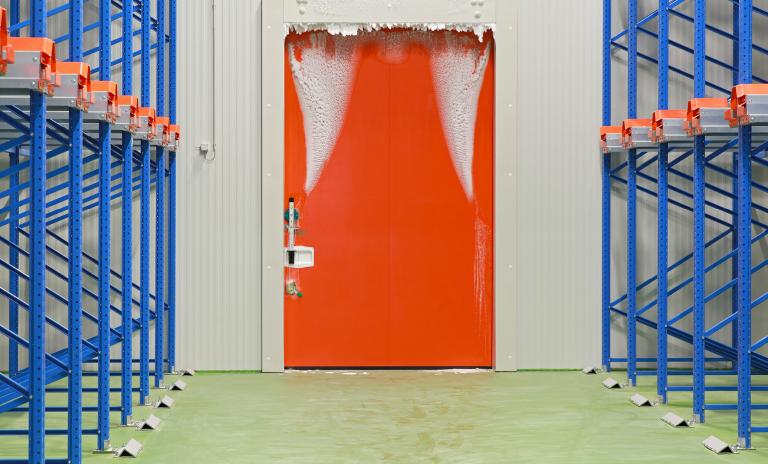
The modernization of the logistics sector has facilitated strong growth, with food distribution increasingly shifting from traditional markets to supermarkets and convenience stores, supported by insulated truck shipping. However, the quality of cold-chain services across the region is inconsistent, leading to significant food waste, particularly during transport.
To facilitate the progress of the cold chain industry in SEA, the market is looking towards the adoption of the following key trends.
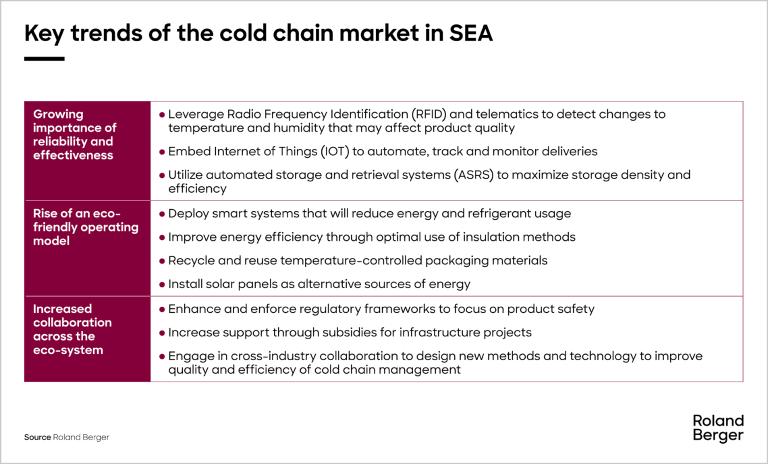
What factors influence purchasing across customer segments?
Location is a key determinant, emphasizing the importance of proximity to ports, production sites, distribution centers, and end customers. Once location needs are met, pricing plays a crucial role, where cost considerations extend beyond basic storage fees.Customer relationships and a provider's track record with similar clients are vital in establishing trust and reliability. These are crucial not only in retaining existing clients but also in attracting new ones, especially in markets where competitors often share the same customer base. Each purchasing criterion below is explored in further detail in our full article.
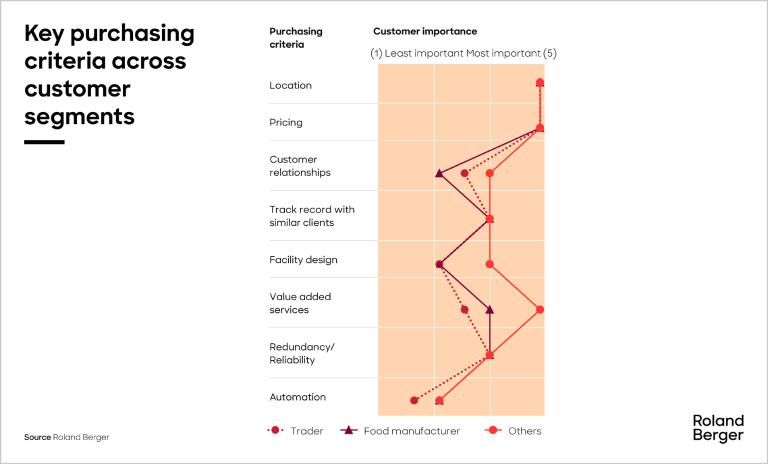
Key operational levers
Based on our operational excellence experience, energy efficiency savings can be the biggest driver to reduce costs. This includes everything from equipment efficiency, such as refrigeration systems and insulation paneling, to level of automation, such as the use of sensors and temperature control. The second biggest cost bucket is labor, which can be optimized by use and adherence to standard operating procedures according to the facility's and customer's needs.
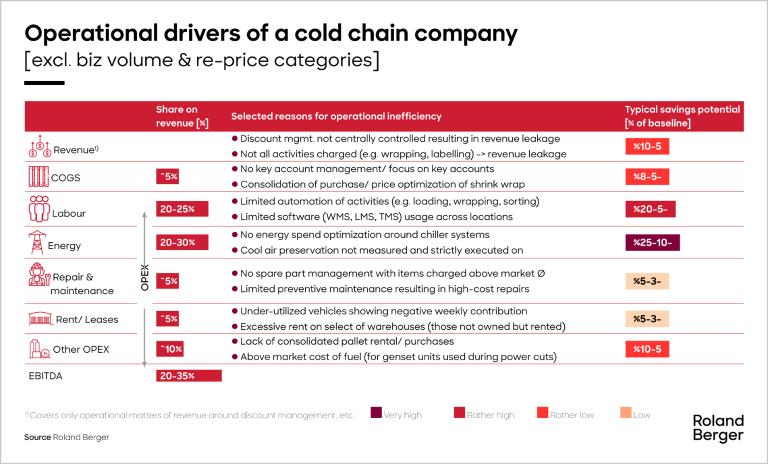
Cold chain market size split
Storage accounts for over 70% of the market and is a critical strategy for companies to hedge against price volatility and supply chain disruptions. Service providers in this sector are navigating the rising costs associated with rental and energy consumption, key factors influencing operational expenses.The need for developing transportation services has grown, mainly due to increasing consumer demand for higher-quality food ingredients and the substantial food waste that occurs during transportation.Value-added services have emerged as a key differentiator, helping manufacturers reduce resource burdens. Service providers deliver high-quality solutions at lower costs by leveraging economies of scale and experience, enabling smaller producers to access premium services and larger manufacturers to focus on their core activities.
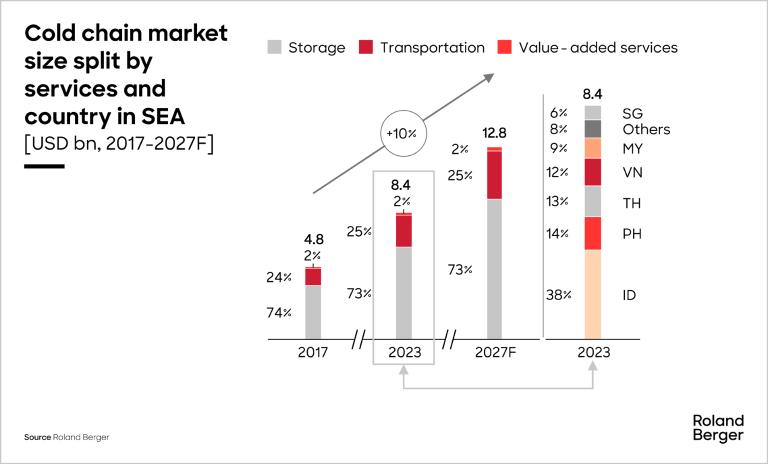
Investment opportunities in Southeast Asia
The region presents strong growth potential in cold chain logistics, driven by rising demand for refrigerated storage and transportation solutions. In key markets like Thailand, this is fueled by the expansion of the pharmaceutical industry, the proliferation of supermarkets, and the growing popularity of frozen foods.With GDP forecasted to grow at between 4.5-8.5%, Southeast Asia’s rising middle class is creating an increased demand for cold chains, reflected by food expenditure and e-commerce growth. Countries across the region are at varying maturity levels of logistics and cold storage capabilities, thus offering various investment opportunities.
Conclusion
Southeast Asia's cold storage warehousing market is fast growing and supported by secular trends in income growth, food consumption, modern trade, and e-commerce penetration. Most countries in the region lag in logistics, thus creating several opportunities for financial investors.
The potential participation options include building a platform by consolidating assets within a country market with a fragmented landscape, as well as the potential to build a platform across the region.
Register now to access the full newsletter and explore how local consumer brands are reshaping Asia’s retail landscape. Furthermore, you get regular news and updates directly in your inbox.






